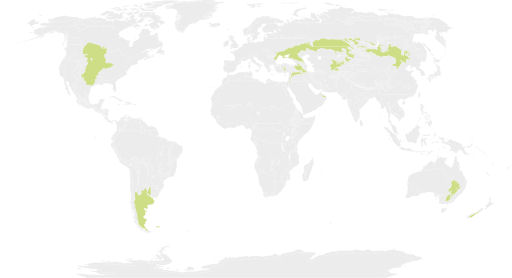Biosphere Contents
6. Biomes
Temperate grasslands occur in areas with dry summers and low winter temperatures
.jpg)
These grasslands cover a large area and from humanity's point of view are very important. They provide pastures for grazing animals and have been the source of many agricultural crops which have been selected from the natural grasses. A temperate grassland soil has a high level of organic matter and is generally fertile. This has led to many grassland areas being used for agriculture. However, the influence of agriculture can lead to rapid soil deterioration if poorly managed. The roots of most grass species penetrate the soil up to a depth of about two metres and the interlaced roots form a turf preventing soil erosion. Once ploughed, however, the turf is destroyed and the soil can rapidly be eroded by wind and water. Some kinds of ploughing can lead to the formation of a hardpan below the surface, which renders the soil virtually impervious to both water and roots. It was these two factors which led to the collapse of agricultural systems and the formation of the American 'dust bowl' in the 1930s.
The summer soil water deficit of temperate grassland areas largely prevents tree growth, except around watercourses and lakes, and hence grass is the dominant vegetation. Grasslands may also develop in areas where a high water table or the frequency of fire favours the growth of grass rather than woody plants. There are distinct zones of different grass length - 'tall grass', 'mixed grass', 'short grass' and 'bunch grass' prairies - largely determined by the amount of rainfall. For example, bunch grass tends to predominate in areas of low rainfall where the grassland merges into desert areas. Temperate grasslands have been given a variety of names depending upon their location. In North America they are known as 'prairies', in Eurasia 'steppes', in Argentina 'pampas' and in South Africa 'veldt'.

What are the main characteristics of the temperate grassland biome?